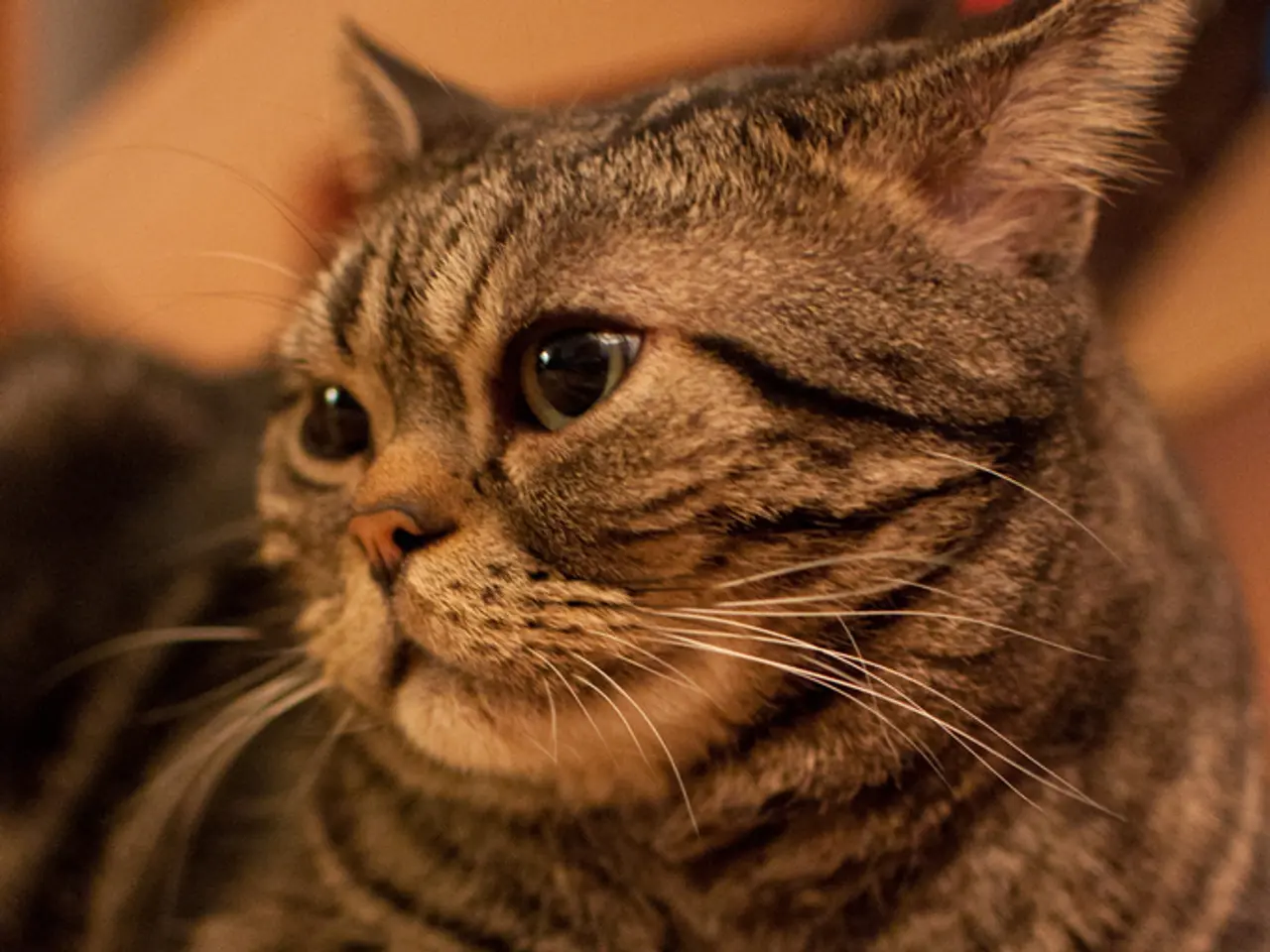Forest Cats Comparison: Siberian versus Norwegian – Choosing the Perfect Feline Companion for You
In the world of feline companionship, two breeds have garnered significant attention for their unique characteristics and impressive qualities - the Siberian Forest Cat and the Norwegian Forest Cat. Dr Rebecca MacMillan, an expert vet, has provided insights into the differences between these two breeds, focusing on their temperament, size, grooming needs, exercise requirements, intelligence, trainability, health considerations, and suitability for various owners.
Temperament
Norwegian Forest cats tend to be more independent, energetic, and moderately active, thriving in active family environments. They are gentle, mild-mannered, nurturing, patient, and good with children, other pets, and even strangers. They want to be friends with everyone but are not demanding of attention.
On the other hand, Siberian Forest cats are highly intelligent and sociable, known for their sweet expression and affectionate nature. They are keen learners and more openly interactive than Norwegian Forest cats.
Size
Siberian Forest cats typically stand 17–25 inches tall and weigh between 11–17 pounds, with a barrel-shaped body and medium-length legs (rear slightly longer). Norwegian Forest cats are slightly shorter at 12–18 inches tall but can weigh 10–20 pounds, with a muscular and longer body, longer rear legs, and a distinctive triangular-shaped head.
Grooming Needs
Both breeds have long, thick coats that require regular grooming. Siberians have a thick, triple-layered coat that can come in many colors, while Norwegian Forest cats have a double coat and always have a mane. Regular grooming sessions with one of the best cat brushes are essential to manage their coats and prevent matting, especially during seasonal shedding.
Exercise
Both breeds enjoy climbing and exploring and require approximately 20–30 minutes of daily physical activity. However, Norwegian Forest cats are generally more high-energy and may require more interactive play and stimulation.
Intelligence
Siberians are highly intelligent and sociable, with a stronger inclination to learn tricks and commands. Norwegian Forest cats are clever with great problem-solving skills but can have a shorter attention span for training.
Trainability
Siberian cats are easier to train and more motivated by positive reinforcement, such as verbal praise or treats, making them more adaptable to commands and tricks. Norwegian Forest cats are trainable but may require more patience as they are less focused on training sessions.
Health Considerations
Both breeds are generally healthy but require regular veterinary care and exercise to avoid obesity due to their larger size. Norwegian Forest cats have hardy genetics adapted to cold climates but can have specific breed-related conditions, such as glycogen storage disease IV and hip dysplasia. Siberians may have fewer genetic issues due to a longer natural breeding history but still need monitoring for typical feline health issues like hypertrophic cardiomyopathy, dental disease, obesity, or kidney disease.
Owner Suitability
Norwegian Forest cats suit active families with children and busy households, given their social but independent nature. They are a good choice for owners wanting a moderately active and affectionate but low-maintenance companion.
Siberian Forest cats are well-suited for owners looking for a highly intelligent, interactive, and trainable cat with a sociable personality who will participate actively in family life.
In summary, Norwegian Forest cats lean toward independence and energy with a patient temperament suited for families, while Siberian Forest cats are more sociable and trainable with a slightly larger build and triple coat. Both breeds require regular grooming and exercise but differ slightly in behavior and engagement with owners.
For added stimulation, both breeds benefit from a variety of interactive cat toys for play. It's also worth noting that no cat is truly a hypoallergenic breed, and some Siberian Forest cats may shed less Fel D1 protein, which may benefit mild allergy sufferers. Lastly, cat puzzle feeders can provide mental stimulation for both breeds.
- Siberian Forest cats, with their triple coats and sociable nature, are inclined towards learning tricks and commands, making them more adaptable to commands and tricks than Norwegian Forest cats.
- Norwegian Forest cats and Siberian Forest cats, two popular breeds known for their unique characteristics, have long and thick coats that necessitate regular grooming sessions with the right cat brushes to keep their coats shiny and matting-free, especially during shedding season.
- In terms of size, Siberian Forest cats have a barrel-shaped body, medium-length legs, and typically weigh between 11–17 pounds, while Norwegian Forest cats are slightly shorter with a muscular and longer body, longer rear legs, and weigh 10–20 pounds.
- Known for their energetic and moderately active nature, Norwegian Forest cats thrive in active family environments and are gentle, patient, and good with children, other pets, and even strangers, although they do not demand constant attention.
- On the other hand, Siberian Forest cats are highly intelligent, affectionate, and more openly interactive, with a sweet expression. They are keen learners and are suitable for owners looking for an active, intelligent, and trainable cat companion.
- While Norwegian Forest cats are generally more high-energy and need more interactive play and stimulation, both breeds enjoy climbing and exploring and require approximately 20–30 minutes of daily physical activity to maintain their health and prevent obesity.
- Both Norwegian Forest cats and Siberian Forest cats require regular veterinary care and exercise to avoid weight gain due to their larger size. However, Norwegian Forest cats may have specific breed-related conditions such as glycogen storage disease IV and hip dysplasia, requiring additional attention and care.
- For home-and-garden enthusiasts who are cat owners, cat puzzle feeders can offer mental stimulation for both breeds, while a variety of interactive cat toys are beneficial for providing added stimulation and play to both Siberian and Norwegian Forest cats.








